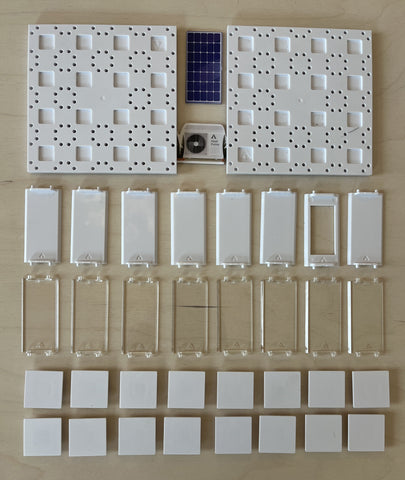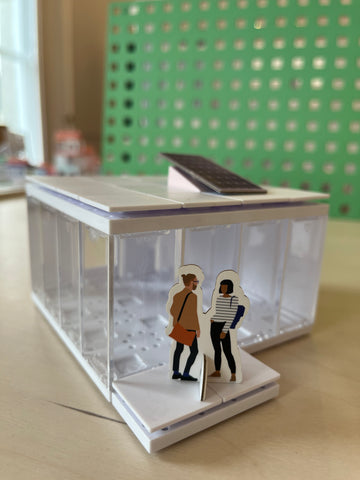ARCKIT 1:1 - A Solution To The Housing Crisis?
Arckit Origins
It was around 2010 when I began to explore an idea for a real modular building concept that I felt could be a significant improvement on other modular building methods that were out there.
Most modular systems were and still are, part assembled off-site, which restricts design flexibility and transportability as well as adding cost. I was endeavoring to break down a building’s makeup into individual components that could click together to enable unrestricted design flexibility, that could be flat packed for easy transport and that could be assembled or dismantled at speed.
I began to test this idea by making scaled down prototype model versions of each individual component to understand how they could interconnect. That was the chance lightbulb moment for another idea, an alternative method of making architectural models other than by gluing card and foam board together. With the recession in full swing and building at a standstill, I shelved the real modular building concept and instead embarked on developing the model version of the real thing which we called Arckit.
The reason I’m relaying the background as to the origins of Arckit, is to explain that it derived directly from a real modular building concept and not an idea for a toy. It’s because if this, that it’s so easy to replicate numerous real buildings in miniature using Arckit and why every time I build any structure with it, I imagine it in a real life scale scenario.
Arckit 1:1
So I can’t help but feel how impactful it could be to society in terms of being able to meaningfully contribute to tackling the multiple housing issues we’re facing globally, if it were to become an actual 1:1 modular building method. It’s fast, flexible, affordable and transportable, a new way to build for the world we live in today. Arckit 1:1 could be endlessly configured to achieve the simplest to the most advanced architectural results. It could also be developed to a number of different specifications depending on its purpose, from basic shelter to an ‘A’ Rated dwelling or apartment building.

To demonstrate the versatility of Arckit’s building platform and how this could translate to a real world 1:1 modular building system, I have taken a basic cube made up of a series of ‘flatpack’ arckit components. Using this single cube and multiplying it, I present a number of different configurations to showcase it’s adaptability to any scenario. An Arckit Cube could be considered for housing the homeless, providing student accommodation or shelter in conflict or climate disaster zones as examples. A cube could be self contained and increased in size by a 1/2, 1 or more units as required. A cube can be stand alone, combined side by side or stackable. The possibilities are endless.

Our own Irish government are calling for more modular buildings to be made and for new innovations in building to be presented so we can resolve the housing crisis once and for all. We are seeing tentative signs of change towards new, innovative and better ways to build, yet modular housing still feels like where electric cars were 10 years. People haven’t fully embraced the idea of modular but there’s a very palpable sense that this is on the cusp of change, prompted by raw necessity and urgency.

If the will is there, I genuinely believe that a real Arckit 1:1 modular building system can become a reality in a relatively short space of time and have a massively positive impact on helping to tackle our housing crisis. It need’s R&D, investment and momentum. If you think you can help or contribute please get in touch.
Scale 1:50










Scale 1:100





View photos in high resolution
